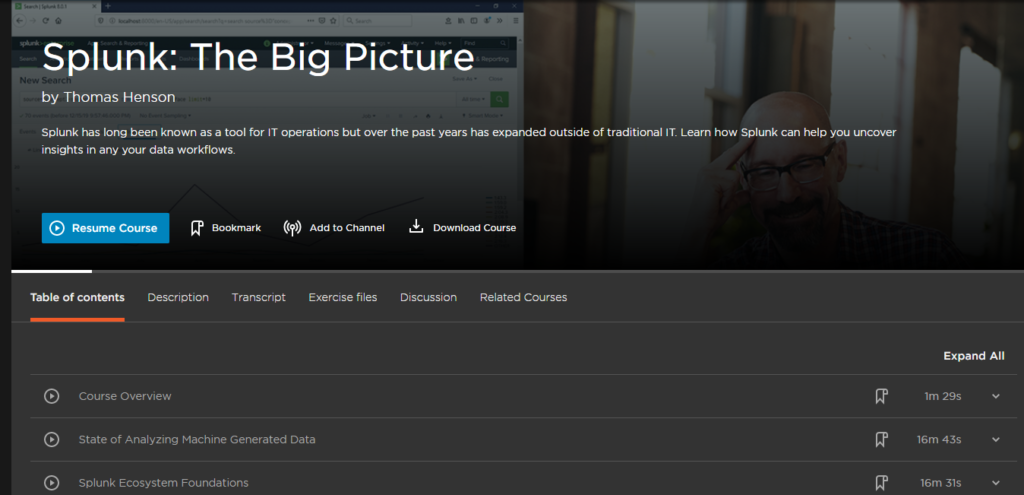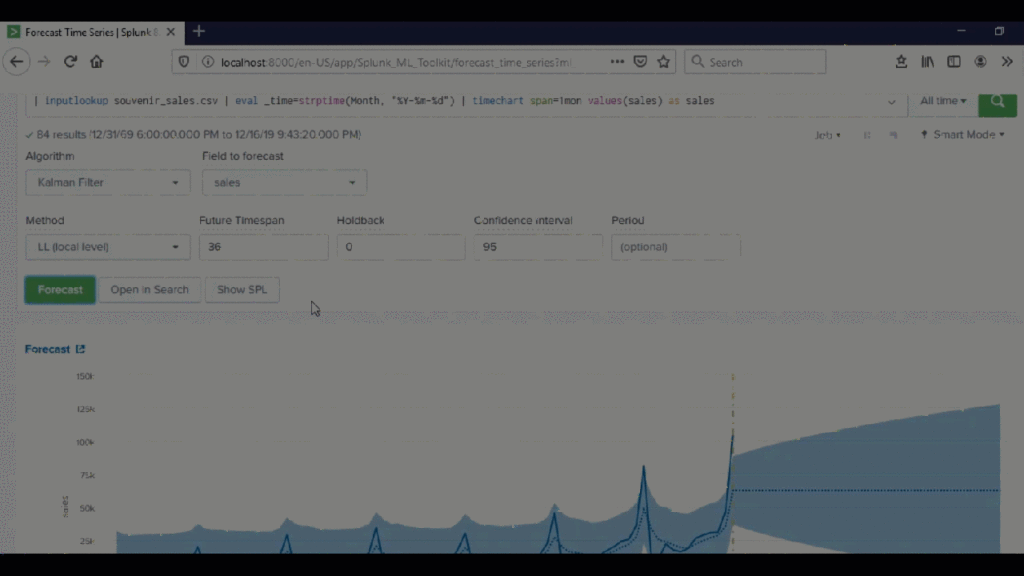Recently I just wrapped up my 5th Pluralsight course on Splunk. The latest course covers Splunk the Big Picture, where we walk through an executive briefing on Splunk and the Splunk ecosystem. Let’s get a little more familiar with Splunk before talking about the details of this 101 minute executive dive into Splunk.
What is a Splunk?
Splunk first started out as a log management tool that has quickly become one of the fastest growing analytic platforms. Today system administrators, storage administrators, and data engineers are using Splunk not only for log management, but as a data analytics platform. In fact, Splunk engineers/architects salaries (average 151K/year) are almost 3X higher than average salary than other IT professionals (average $54K/year).
Splunk has continued to expand use cases in fields outside of IT with emerging applications in IoT, Data Analytics, IoT, DevOps, Cyber Security, Retail, and more. All of these emerging areas are increasing the demand for Splunk engineers/architects which continues to increase the salaries for Splunk specialist. Even non-technical business users are starting to implement Splunk in their work flows. This is why I wanted to put together a non-technical course around Splunk. Let’s break down how it’s structured.
State of Machine Generated Data
The Splunk: Big Picture course starts off with an overview of machine generated data. If you aren’t familiar with machine generated data it is the data from applications, computing resources, and etc. The majority of the data can be log files and tends to semi-structured in nature. The core of Splunk revolves around how to ingest, store, and visualize organizations machine generated data. After running through a quick Splunk Hello World application it’s time to talk Splunk Foundations.
Foundations of the Splunk Ecosystem
The success of any application, tool, or product is the community. Imagine Apple without a community that camps out all night for the newest iPhone or empty seats at Apple WWDC. Apple wouldn’t be Apple without that community. Splunk too has a robust community of loyal users and developers (sometimes called Splunk Ninjas). These Splunk Ninjas are helping new and experienced Splunk users in the Splunk Answers (community support Q&A) or building Splunk application to make your life easier. No matter your use case for Splunk, the community will be instrumental in your Splunk success.
Splunk For Security Administration
Enterprise IT security will hit $103 Billion in 2019 Splunk plays a huge role in that market as well. Outside of IT operations, Splunk’s largest set of users are IT Security Admins. The heart of Splunk IT security is their add-on application Splunk Enterprise Security. In the Splunk: The Big Picture we walk through the options for IT Security with Splunk and finish with a demo on Splunk Enterprise Security.
Splunk for DevOps Engineer
DevOps is changing the way both developers and IT operations deploy applications in the enterprise. Splunk offers developers unique tools for managing the DevOps processes in their organizations. Whether you are managing logs from debugging or working through a downed application after hours, Splunk offers applications for that process. In 2018 Splunk acquired VictorOps to add to the Splunk platform for integrating more DevOps processes in the Splunk Ecosystem. If you work in IT operations please take sometime to look over VictorOps.
Managing the Internet of Things with Splunk
Next in our tour of the Splunk ecosystem we turn to the Internet of Things (IoT). Edge devices, smart anything, or IoT are devices that send or delay data for monitoring and analytics. Since Splunk is a data platform this is a perfect area for IoT Data. In fact, Splunk has been doing IoT before IoT was well a, IT term. The first use cases for Splunk were to send log files from servers, switches, etc. to a main Splunk instance for analytics (this is essentially IoT). Just as IoT has grown outside of the data center so has Splunk with their IoT offerings.
Splunk’s Role in Big Data & Machine Learning
The last topic in the Splunk: The Big Picture course is my favorite topic area BIG DATA. Splunk has a long history of working with Big Data from their Hunk application, which integrated data from/to the Hadoop Distributed File System (HDFS), to the Splunk Machine Learning Toolkit . The newest addition to the Splunk Big Data ecosystem is the Machine Learning Toolkit. In this course I will give a high level overview of the Splunk Big Data applications and then walk through a demo of the free Splunk Machine Learning Toolkit!
Here’s how you can dive deeper into Splunk:
- Follow my Pluralsight Courses on Splunk, Hadoop, Tensorflow, and Data Engineering
- Ask a question on Big Data Big Questions on topics around Splunk, Data, Systems Administration, or anything data related.
- Scroll through my Twitter Feed where I posted my journey through different Splunk tips, tricks, and applications.


